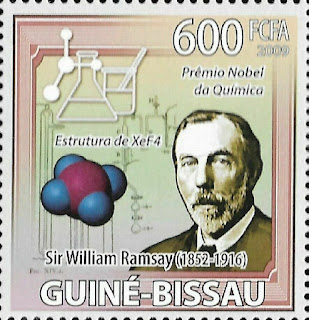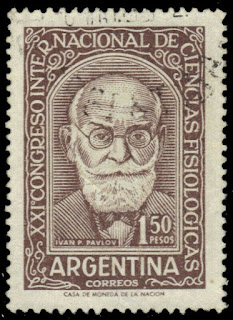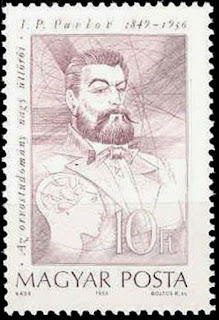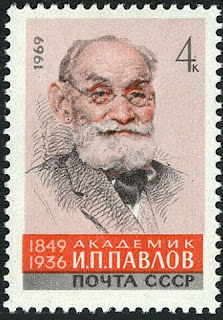The Nobel Prizes (Swedish: Nobelpriset, Norwegian: Nobelprisen) are prizes awarded annually by the Royal Swedish Academy of Sciences, the Swedish Academy, the Karolinska Institutet, and the Norwegian Nobel Committee to individuals and organizations who make outstanding contributions in the fields of chemistry, physics, literature, peace, and physiology or medicine. They were established by the 1895 will of Alfred Nobel, which dictates that the awards should be administered by the Nobel Foundation. The Nobel Memorial Prize in Economic Sciences was established in 1968 by the Sveriges Riksbank, the central bank of Sweden, for contributions to the field of economics. Each recipient, or "laureate", receives a gold medal, a diploma, and a sum of money, which is decided annually by the Nobel Foundation
Here is a list of 1904 Nobel laureates
Physics: Lord Rayleigh, John William Strutt, 3rd Baron Rayleigh, English physicist and academic
John William Strutt, 3rd Baron Rayleigh(12 November 1842 – 30 June 1919), was a British scientist who made extensive contributions to both theoretical and experimental physics. He spent all of his academic career at the University of Cambridge. Among many honors, he received the 1904 Nobel Prize in Physics "for his investigations of the densities of the most important gases and for his discovery of argon in connection with these studies." He served as President of the Royal Society from 1905 to 1908 and as Chancellor of the University of Cambridge from 1908 to 1919.
Rayleigh provided the first theoretical treatment of the elastic scattering of light by particles much smaller than the light's wavelength, a phenomenon now known as "Rayleigh scattering", which notably explains why the sky is blue. He studied and described transverse surface waves in solids, now known as "Rayleigh waves". He contributed extensively to fluid dynamics, with concepts such as the Rayleigh number (a dimensionless number associated with natural convection), Rayleigh flow, the Rayleigh–Taylor instability, and Rayleigh's criterion for the stability of Taylor–Couette flow. He also formulated the circulation theory of aerodynamic lift. In optics, Rayleigh proposed a well known criterion for angular resolution. His derivation of the Rayleigh–Jeans law for classical black-body radiation later played an important role in the birth of quantum mechanics (see Ultraviolet catastrophe). Rayleigh's textbook The Theory of Sound (1877) is still used today by acousticians and engineers.
Stamp issued by Guinea Bissau depicting Lord Rayleigh

Chemistry: William Ramsay, Scottish-English chemist and academic
Sir William Ramsay (2 October 1852 – 23 July 1916) was a Scottish chemist who discovered the noble gases and received the Nobel Prize in Chemistry in 1904 "in recognition of his services in the discovery of the inert gaseous elements in air" along with his collaborator, John William Strutt, 3rd Baron Rayleigh, who received the Nobel Prize in Physics that same year for their discovery of argon. After the two men identified argon, Ramsay investigated other atmospheric gases. His work in isolating argon, helium, neon, krypton and xenon led to the development of a new section of the periodic table.
Stamp issued by Guinea Bissau depicting William Ramsay

Physiology or Medicine: Ivan Pavlov, Russian physiologist and physicianIvan Petrovich Pavlov (Russian: Ива́н Петро́вич Па́влов; 26 September 1849 – 27 February 1936) was a Russian physiologist known primarily for his work in classical conditioning.
From his childhood days Pavlov demonstrated intellectual curiosity along with an unusual energy which he referred to as "the instinct for research". Inspired by the progressive ideas which Dmitry Pisarev, a Russian literary critic of the 1860s, and Ivan Sechenov, the father of Russian physiology, were spreading, Pavlov abandoned his religious career and devoted his life to science. In 1870, he enrolled in the physics and mathematics department at the University of Saint Petersburg to study natural science.
Pavlov won the Nobel Prize for Physiology or Medicine in 1904, becoming the first Russian Nobel laureate. A survey in the Review of General Psychology, published in 2002, ranked Pavlov as the 24th most cited psychologist of the 20th century. Pavlov's principles of classical conditioning have been found to operate across a variety of behavior therapies and in experimental and clinical settings, such as educational classrooms and even reducing phobias with systematic desensitization.
Stamps from Hungary, Romania, Argentina and Russia depicting Ivan Pavlov
Literature: Frédéric Mistral, French lexicographer and poetFrederic Mistral (Occitan: Josèp Estève Frederic Mistral, 8 September 1830 – 25 March 1914) was a French writer of Occitan literature and lexicographer of the Provençal form of the language. Mistral received the 1904 Nobel Prize in Literature "in recognition of the fresh originality and true inspiration of his poetic production, which faithfully reflects the natural scenery and native spirit of his people, and, in addition, his significant work as a Provençal philologist". He was a founding member of the Félibrige and a member of l'Académie de Marseille.
His name in his native language was Frederi Mistral (Mistrau) according to the Mistralian orthography or Frederic Mistral (or Mistrau) according to the classical orthography.
Mistral's fame was owing in part to Alphonse de Lamartine who sang his praises in the 40th edition of his periodical Cours familier de littérature, following the publication of Mistral's long poem Mirèio. Alphonse Daudet, with whom he maintained a long friendship, eulogized him in "Poet Mistral", one of the stories in his collection Letters from My Windmill (Lettres de mon moulin).
Stamps from France and Monaco depicting Frédéric Mistral
Literature: José Echegaray, Spanish engineer, mathematician, and playwright
José Echegaray y Eizaguirre (19 April 1832 – 14 September 1916) was a Spanish civil engineer, mathematician, statesman, and one of the leading Spanish dramatists of the last quarter of the 19th century. He was awarded the 1904 Nobel Prize for Literature "in recognition of the numerous and brilliant compositions which, in an individual and original manner, have revived the great traditions of the Spanish drama".
Theater had always been the love of José Echegaray's life. Although he had written earlier plays (La Hija natural and La Última Noche, both in 1867), he truly became a dramatist in 1874. His plays reflected his sense of duty, which had made him famous during his time in the governmental offices. Dilemmas centered on duty and morality are the motif of his plays. He replicated the achievements of his predecessors of the Spanish Golden Age, remaining a prolific playwright.
His most famous play is El gran Galeoto, a drama written in the grand nineteenth century manner of melodrama. It is about the poisonous effect that unfounded gossip has on a middle-aged man's happiness. Echegaray filled it with elaborate stage instructions that illuminate what we would now consider a hammy style of acting popular in the 19th century. Paramount Pictures filmed it as a silent with the title changed to The World and His Wife, and it was the basis for a later film The Great Galeoto. His most remarkable plays are O locura o santidad (Saint or Madman?, 1877); Mariana (1892); El estigma (1895); La duda, 1898; and El loco Dios (God, the fool, 1900).
Among his other famous plays are La esposa del vengador (1874) (The Avenger's Wife); En el puño de la espada (1875) (In the Sword's Handle); En el pilar y en la cruz (1878) (On the Stake and on the Cross); and Conflicto entre dos deberes (1882) (Conflict of Two Duties).
Along with the Provençal poet Frédéric Mistral, he was awarded the Nobel Prize for Literature in 1904, after having been nominated that year by a member of the Royal Spanish Academy, making him the first Spaniard to win the prize.
José Echegaray maintained constant activity until his death on 14 September 1916 in Madrid. His extensive work did not stop growing in his old age: in the final stage of his life he wrote 25 or 30 mathematical physics volumes. At the age of 83 he commented:
I cannot die, because if I am going to write my mathematical physics encyclopedia, I need at least 25 more years.
Swedish stamp depicting Echegaray
Peace: Institut de Droit International
The Institute of International Law (French: Institut de Droit International) is an organization devoted to the study and development of international law, whose membership comprises the world's leading public international lawyers. The organization is generally considered the most authoritative world academy of international law[by whom?]. It was awarded the Nobel Peace Prize in 1904.











No comments:
Post a Comment